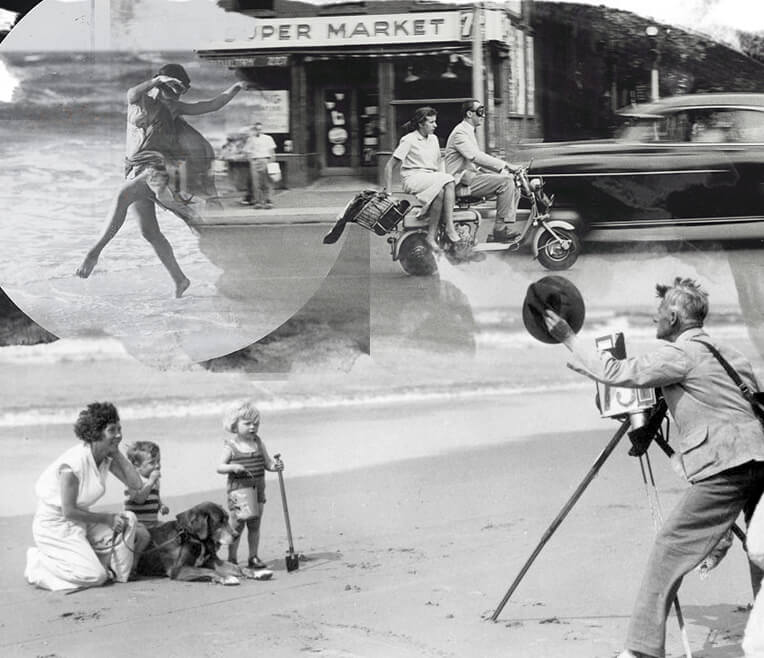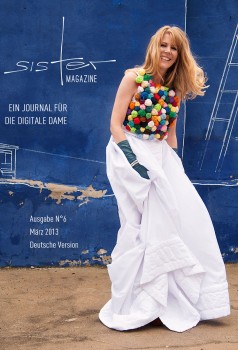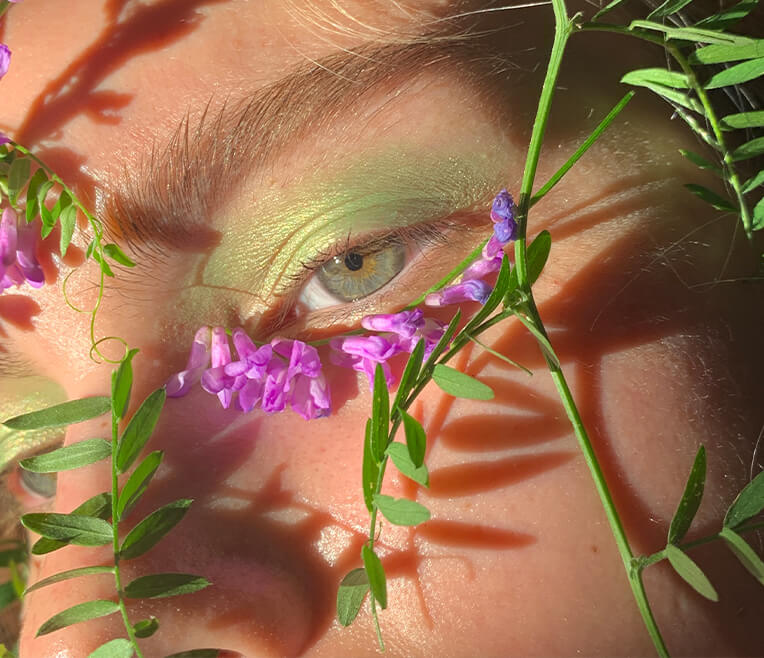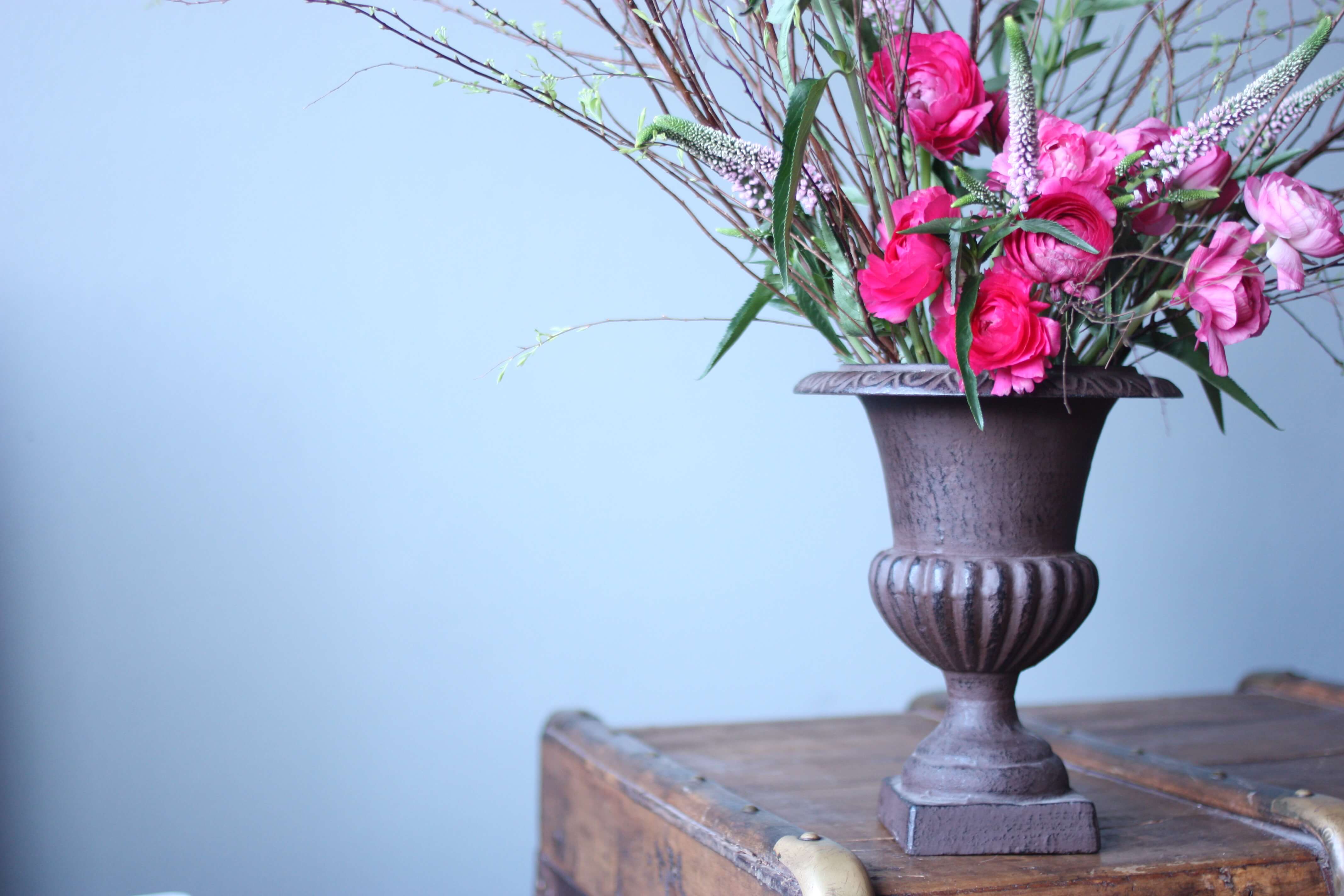
Still Life Photography
In sisterMAG, photographer, blogger and flower stylist Elodie Love shows you how to transfer your home (floer) still life into photographic still lifes and skillfully stage yourself in a detailed feature. Elodie shares her tips and tricks with you and gives step-by-step instructions. Find the full feature here!
- introduced by:: Elodie Love
Still Life Photography: An introduction by Elodie Love
Still Life Photography is the depiction of inanimate subject matter, most typically a small grouping of objects. Still Life Photography, more so than other types of photography such as landscape or portraiture, gives the photographer more leeway in the arrangement of design elements within a composition.
Still Life Photography is a demanding art, one in which the photographers are expected to be able to form their work with a refined sense of lighting, coupled with compositional skills. The still life photographer makes pictures rather than takes them. Knowing where to look for propping and surfaces also is a required skill.
This is the definition of still life photography given by Wikipedia. It’s a discipline I have been interested in for a long time, and which I use in my blog, mostly through flower photography and sometimes food and other inanimate objects.
When you hear the word “still life” or in French “nature morte” (dead nature) you probably associate it with the Dutch and Flemish painters from the 16th and 17th Century, but it is still a growing trend in photography and is a beloved topic for Instagram and blog photography. I will introduce you to Kevin Best, one the most talented living still life photographers and give you some tips to achieve great still life photography at home.
Still Life Photography as a trend:
Still Life Photography is something that has been seen in interior magazines for a long time, but it is also a growing trend that you can see in lifestyle and food blogs. The idea is not only to show a new product or a new cake recipe, but to arrange it in a tasteful way that makes you curious or hungry, with a bite missing and some crumbs on the side of the plate, or with some candles framing the new decoration you want to show on your blog. It’s all about visual story-telling and making an image interesting for the eye.
It can be anything, a couple of books on a table, next to a cup of steaming tea with a candle, a bunch of flowers with fruits to the side. I like how photographers or stylists can display a scene to make you imagine what happened just before the photo was taken.
The growing success of Instagram also illustrates this trend, as the most successful instragramers, such as sandrajuto and apieceofcake82, use a lot of the still life photography composition techniques in their pictures.
Still Life Photography – the modern masters:
Lately, I was trying to learn more about this type of photography and visited the museum shop of the Deichtorhallen (the International museum of photography in Hamburg, Germany). I couldn’t find any books solely on the subject, thus I continued searching online and found a beautiful book on Amazon called “Still Life Photography” by the Australian artist Kevin Best.
I already knew Kevin Best through a couple of his photographs from the German art gallery Lumas. Kevin’s speciality is the reinterpretation of the Flemish and Dutch golden age paintings. “Still Life Photography” was published in June 2012 and is full of technical and styling tips that can also be used in food or flower photography.
I had a very interesting user experience reading Kevin’s book. I bought it on Amazon as a Kindle book. I thought at first that this could be a mistake as it is a book about photography with a lot of pictures. On the contrary, I found it was a very interesting experience. I devoured the book in a couple of days, and I love the fact that you can take notes on your Kindle and mark the passages you want to read again later. It was a bit frustrating, though, seeing Kevin’s beautiful pictures in black and white, so I visited his Flickr Gallery.
After finishing the book, I wrote an e-mail to Kevin, asking him if he would be willing to do an interview, and he agreed straight away:
THE INTERVIEW
Could you tell me what motivated you to become a still life photographer?
While studying at The Australian Centre of Photography one of the assignments was to create a still life. In studying the history and symbolism of them I became deeply interested in the process of creating narratives from inanimate objects. I also found the practice really suited my temperament as it requires patience and technical skill.
What did you do before?
Mostly landscape, travel photography and surreal composites.
What is it about still life photography that you love?
I find thm very beautiful, they can be deeply meaningful and highly contemplative.
What do you find fascinating in the paintings of the Dutch masters?
They developed a large range of fascinating symbols that resonate to this day.
They were technically flawless and able to handle highly complex compositions in a very harmonious way.
What is the importance of compositional and styling skills for a still life photographer?
A composition gives the eye somewhere to travel and somewhere to rest. Styling gives the piece a look that makes it distinctive.
Where do you find your props for the photo shootings?
Do you go to flee-markets, or do you shop on e-bay?
I go to flea markets, auction houses, antique stores, eBay, and if I can’t find what I want, I make it.
What type of camera and lenses do you use?
I use a medium format digital camera with a 50mm equivalent lens.
Do you often use flowers in still life photography? If yes, which flower is your favourite?
Occasionally I tackle flower pieces, like the Dutch, I love tulips and irises.
How do you use Flickr for your communication?
I discuss my works there, get lots of tips from other photographers, from the correct stitching on a napkin to details on ancient violins, it has certainly made my work look more authentic. Other photographers have also inspired me in subtle ways.
Do you upload every new photo on Flickr?
No, only the few I think are worth discussing.
Do you think it is a useful tool as a photographer?
I have been discovered by a number of galleries via Flickr, have been published in numerous magazines via Flickr, but more importantly the constant feedback encouraged me to continue with my practice and keeps me motivated.
How to achieve great still life photography at home:
Props:
Before starting your photo shoot, you should sketch the photo you want to achieve in your head, think about the story you want to tell and maybe take a little tour of your home and look at the little things you like and could inspire you for a photograph. It could be
- A globe
- A spoon collection
- A vase or a glass full of wine
- An object you brought back from a trip abroad
- A book or a pile of books
- Some feathers
- A pretty looking fruit: in classical still life paintings, you find a lot of lemons (often already half-pealed), pears or quinces.
- A musical instrument
Styling Tips:
I like to play with fabric also when composing a picture. If you photograph food or flowers, it can enhance your picture dramatically to put your plate, your soup, or a bunch of violets on a coordinated or on a contrasting fabric. Fabric can also be used as a pretty background.
Another important aspect with collection props for a photo can be the size. You can tell a story with big and small objects, and create a surprise for the eye of the beholder.
The colour can also be very important, you can group some very different items by colour in order to create some harmony.
Floral still life:
The classical floral still life
If you are especially interested in flower photography, the choice of vase is very important. If you want to recreate the flower paintings from the Dutch masters, an iron medicis vase would be the most appropriate. The 17th-century still life bouquet usually contains many different blooms and foliage.
The Flaming Parrot tulip is a typical flower used in those kind of arrangements, but you can use any kind of tulips. Peonies, ranunculus, roses, anemones, delphinium and lilac can also very well be used for these bouquets.
- You should put some moss (to be found in most flower shops) at the bottom of your vase
- You should then start building the outline of the arrangements with the longest branches of foliage. A good rule of thumb is that the tallest branches should be at least one and a half times the height of the vase, so that the overall composition looks balanced.
- Add some of the longer-stemmed flowers to the outline of the foliage.
- Continue to build up the density of the display with some larger flowers.
- Put the short-stemmed flowers towards the edge of the vase.
The modern floral still life
There are no set rules for this kind of arrangement. My tip would be not to mix too much. A bunch of peonies, artistically displayed in a beautiful vase can look good by itself, so if you like it simple, just keep it simple. You can also use just one type of flower, but in different colours.
If you want to compose a bouquet using different flowers, consider:
1- the colour: complementary or monochrome
2- the size of the stems
3- the texture
4- the scent: if you use hyacinth, for instance, you don’t want to mix this with another very scented flower.
The choice of the vase is also crucial. Do you want to play with transparency, for instance, by binding your flowers together with a pretty ribbon and making it visible, or do you want an opaque vase?
What I like to do, when I work on an arrangement, is always to use two or three vases and play with the sizes.
I like very much to create a miniature version of a big bouquet, and take a picture of the smaller bouquet with the bigger one in the background.






